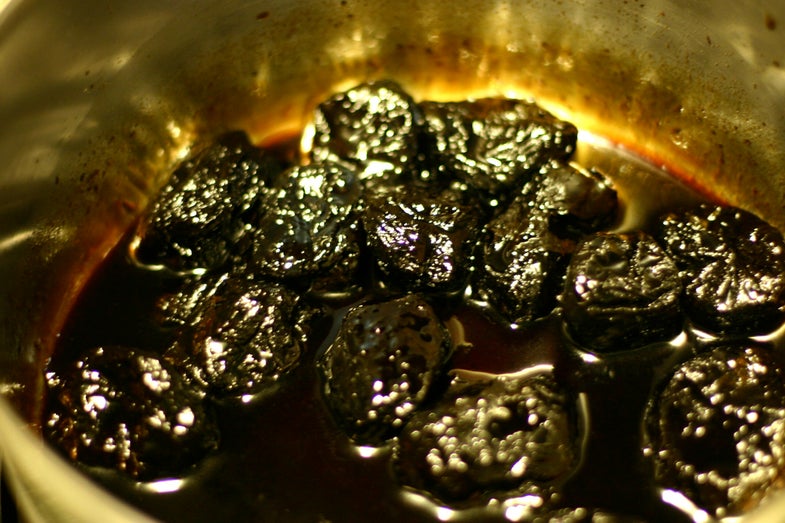Future Astronauts May Need To Eat A Lot Of Prunes
Not for the reasons you might expect

Our bodies weren’t built for outer space. Astronauts who spend a lot of time on the space station often experience a variety of health issues, including circulatory problems and bone and muscle loss. And the problems could get worse when humans venture beyond low Earth orbit. Space radiation is a particular concern.
Space radiation consists mainly of charged solar particles and galactic cosmic rays–high-energy protons and ions streaming in from outside the solar system. Astronauts on the International Space Station are mostly protected from these particles by Earth’s magnetosphere. But as we venture to Mars and beyond, we will leave behind Earth’s protective bubble.
Now, a small, short-term experiment in mice indicates that prunes may protect our bones from the damaging effects of space radiation. That’s not only good news for astronauts, but also for chemotherapy patients and radiation workers here on Earth.
As we venture to Mars and beyond, we will leave behind Earth’s protective bubble.
Normally, exposure to ionizing radiation increases the activity of cells whose job is to break down bone. (Space radiation also has other nasty effects on the human body.) The research team, led by scientists at NASA, tested four treatments that might help prevent radiation-induced bone loss: dihydrolipoic acid (DHLA, which has antioxidant properties); a cocktail of 5 antioxidants; ibuprofen; and prunes.
For up to 21 days, they fed one treatment to each group of 5 to 10 mice, then exposed the mice to gamma radiation. Gamma radiation isn’t exactly the same as space radiation, but both kinds are ionizing radiation, meaning they like to pull electrons off the atoms in your cells. Gamma radiation is easier to create here on Earth than space radiation, since we use it regularly to treat cancer patients.
The control mice, which ate standard lab mouse food, expressed genes associated with bone loss, and bone degradation.
Ibuprofen and DHLA dampened some of the bone-degrading genes, but not enough to prevent bone loss. And the antioxidant cocktail didn’t help at all.
But mice who ate prunes did much better. The researchers took CT scans of samples from the mice’s leg bones. While mice who didn’t eat prunes showed a 32 percent drop in bone volume, the prune-eating mice didn’t show any drop, “indicating potent radio-protective effects of DP against cancellous bone loss,” the researchers write.
Prune-eating mice didn’t show any drop in bone volume.
Next they tested the prune treatment against simulated space radiation, bombarding the mice with high-energy protons and ions. Again, the prunes seemed to fully protect against the bone-damaging effects of ionizing radiation.
The results are promising, but the study was very small. They’ll need to repeat it with a larger number of mice and possibly other animals before we can tell if the treatment could help humans. And longer-term studies will give a better idea about whether this would be an effective treatment on a years-long mission to Mars.
In addition, this study only looked at spongy (“cancellous”) bone. The researchers want to know whether prunes will have protective benefits for a tougher and more compact type called cortical bone.
They also want to figure out what it is in the prunes that may be causing the protective effects. It could be one or many polyphenols, or even pectin, sugars, or other compounds. If they could isolate the chemicals that may protect against radiation, that would make it easier to control the dosage.
And, maybe it would help to separate the radiation-shielding chemicals from the ones that give prunes a laxative effect. That seems like it could get messy in space.